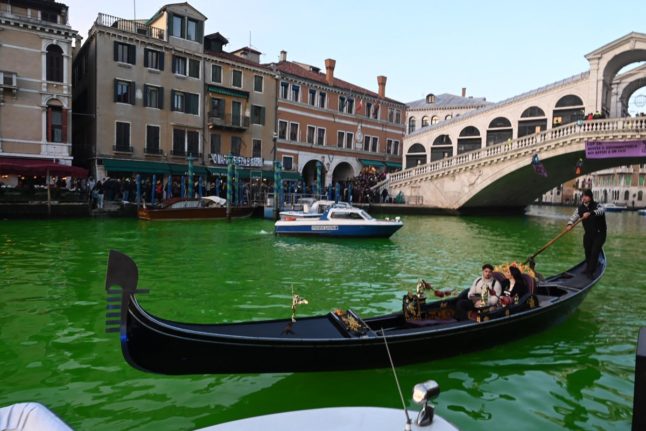In the middle of the afternoon, the activists poured a fluorescent green liquid into the Grand Canal, Venice, in the midst of passers-by, gondolas and tourists, according to images posted on social networks.
At the same time, activists hanging from ropes and harnesses unfurled a banner from Venice’s famous Rialto Bridge reading “COP28: while the government talks, we’re hanging on by a thread”.
Oggi in Italia attivistɜ di XR hanno denunciato l’ennesimo fallimento della #COP28 nel contrastare la #CrisiClimatica.
Il colorante usato è fluoresceina, un sale innocuo: tra qualche ora, queste acque torneranno come prima.
I governi parlano, contiamo danni e vittime.
1/10 pic.twitter.com/KycyhYVAMo— Extinction Rebellion Italia (@XrItaly) December 9, 2023
Extinction Rebellion Italy said on X, formerly Twitter, that it had sprayed a “harmless” fluorescein dye in the Venice waters.
“The climate crisis is already having a disastrous impact on Italy, science tells us it’s going to get worse and politicians are wasting time with farce,” the group lamented in a statement.
“We are revolting against this inaction, we cannot remain silent while our future is sold out to the fossil industries!”
Similar actions were carried out in the Tiber in Rome, in a canal in Milan and in the Po in Turin, according to images posted on social networks.
READ ALSO: MYSTERY SOLVED: Why Venice’s Grand Canal turned green
In May, environmental activists painted the basin of Rome’s iconic Trevi Fountain black after deadly floods in northeast Italy, which they claimed was a “warning” about climate change.
China said on Saturday it saw progress in reaching a climate deal at a key United Nations COP28 summit in Dubai, despite a last-minute push by the OPEC oil cartel to resist a phase-out of fossil fuels.



 Please whitelist us to continue reading.
Please whitelist us to continue reading.
Member comments